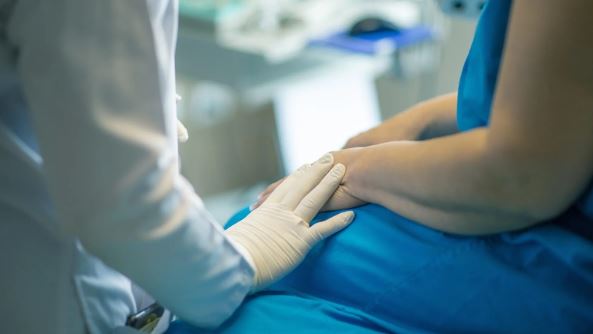Lifestyle
Cervical cancer: What you need to know about this silent killer

Although cervical cancer may seem like a far-off problem, it is crucial for your health to be aware of its complexities. Cervical cancer is the fourth most common cancer in women.
Cervical cancer claimed the lives of about 311,000 women globally in 2018, with the WHO reporting 570,000 new cases of the disease.
Here is all you need to know about the causes, symptoms, and array of available preventive techniques as we set out to solve the mysteries surrounding cervical cancer.
What causes Cervical Cancer?
There is no one culprit behind cervical cancer; rather, a number of complicated factors combine to cause it. The primary cause is the Human Papillomavirus (HPV), a dangerous virus. The majority of cases of cervical cancer (99%) are associated with HPV infection. HPV is a very common virus that is spread through sexual contact. It is complicated by the fact that it can last for years, causing changes in cervical cells over time and ultimately opening the door for cancer.
But that’s not the only accomplice. Other risk factors contribute to the plot: Multiple sexual partners, starting the journey into sexual activity at a young age heightens vulnerability, infections like chlamydia, gonorrhea, syphilis, and HIV/AIDS can increase the risk, and smoking is not just harmful to your lungs; it’s associated with an elevated risk of cervical cancer.
What are the symptoms of Cervical cancer?
Listen to your body because cervical cancer can be a silent invader, especially in the early stages. While the majority of HPV infections clear up on their own and don’t cause any symptoms, persistent infections can lead to cervical cancer in females. The plan of action evolves as it goes along:
Initial stages: There is silence. Because cervical cancer may not show any symptoms at all, screenings should be done on a regular basis.
Higher levels: Signs such as abnormal discharge, heavier, prolonged menstrual bleeding, pelvic pain during sex, and unusual bleeding after sexual activity thicken the plot. These signals are your body’s distress signals, so pay attention to them.READMORE
What are the risks and complications?
Now that the enemy has been located, the next step is to plan your counterattack. Each treatment has a unique set of difficulties.
Complications resulting from treatment: Radiation or surgery may cause lymphoedema, early menopause, and vaginal narrowing. These are fights in which victory is possible.
Complications of advanced Cervical Cancer: Advanced stages can cause excruciating pain, kidney failure, blood clots, bleeding, fistula formation, and excessive vaginal discharge in the heat of the fight. Being aware of these issues is essential to being ready.
Can it be cured?
If detected on time, it can be managed, hence constant screenings play a very significant role in arresting the disease at an early stage.
HPV Vaccine: This vaccine, administered before sexual activity begins, protects you from the most common HPV types linked to cervical cancer.
Tests are done on a regular basis. The advantage lies in early detection. Regular screenings can identify abnormalities before they progress to cancer.
Safe sexual behaviour: Condoms are like sentinels protecting your castle, preventing HPV transmission.
Avoid smoking: Quit not only for the health of your lungs but also as a preventative measure against cervical cancer.








